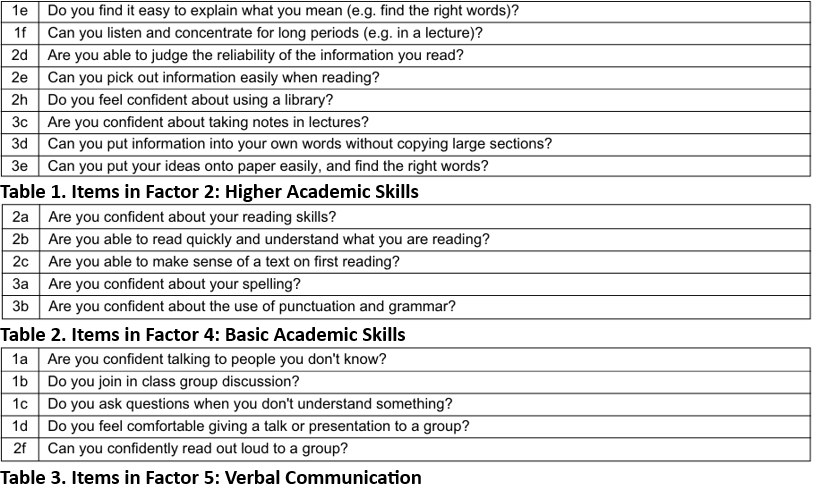
Development of Revised Tool
 المؤلف:
Sherria Hoskins & Carolyne Jacobs & Heather MacKenzie
المؤلف:
Sherria Hoskins & Carolyne Jacobs & Heather MacKenzie
 المصدر:
Enhancing Teaching and Learning through Assessment
المصدر:
Enhancing Teaching and Learning through Assessment
 الجزء والصفحة:
P191-C17
الجزء والصفحة:
P191-C17
 2025-07-03
2025-07-03
 482
482
Development of Revised Tool
The factor analysis indicated that the structure of the questionnaire could be improved. Therefore the exercise was repeated in order to identify the most convincing factor structure. In the first stage, item analysis, items were removed if they failed to discriminate between individual students, this included items where more than 65% of participants responded at one end of the scale (e.g. they all agreed with the item being presented). Items 2g, 6b and 6j were removed.
The amended data was subjected to Principal Components Factor Analysis, on this occasion without a pre-determined number of factors. A scree plot indicated the optimum factor structure and again a 6 factor solution emerged. The emergent factors were as follows:
Factor 1: Numeracy, mapping to the Numeracy section of the original ILP questionnaire.
Factor 2: Higher Level Academic Skills. Factor 2 was less clear to interpret as items included those from Section 1: Speaking and Listening, Section 2: Reading and Researching, and Section 3: Writing of the existing ILP. The research group felt that these items could usefully be grouped under the heading Higher Academic Skills -see Table 1.
Factor 3: Information Technology. This factor maps directly to the IT section of the original ILP questionnaire.
Factor 4: Basic Academic Skills. Factor 4 again combines items from the Reading and Researching and Writing sections of the original ILP. The team entitled this section Basic Academic Skills (see Table 2).
Factor 5: Verbal Communication. Factor 5 comprised the majority of items from Section 1: Speaking and Listening of the existing ILP and one item from Section 2: Reading and Researching (see Table 3). This factor clearly identifies confidence in verbal communication skills.
Factor 6: Time Management. The time management section of the existing ILP was fully replicated in factor 6.
All factors show excellent internal consistency and split-half reliability (above 6 factors in all cases).
Clearly then, the psychometric analysis indicates that the structure of the original ILP is robust with strong internal reliability and consistency. The grouping of questions is borne out in the statistical analysis. However, this analysis also revealed where improvements could be made to the factor structure of the ILP (in other words the way in which questions are grouped and thus scored) by re-grouping a number of items in 6 new sections: Verbal Communication, Basic Academic Skills, Higher Academic Skills, Time Management, Numeracy and IT. The research team considered that the reference to academic learning in the new structure be more persuasive when convincing academic staff and students about the value of engaging in PDP activities.

 الاكثر قراءة في Teaching Strategies
الاكثر قراءة في Teaching Strategies
 اخر الاخبار
اخر الاخبار
اخبار العتبة العباسية المقدسة


